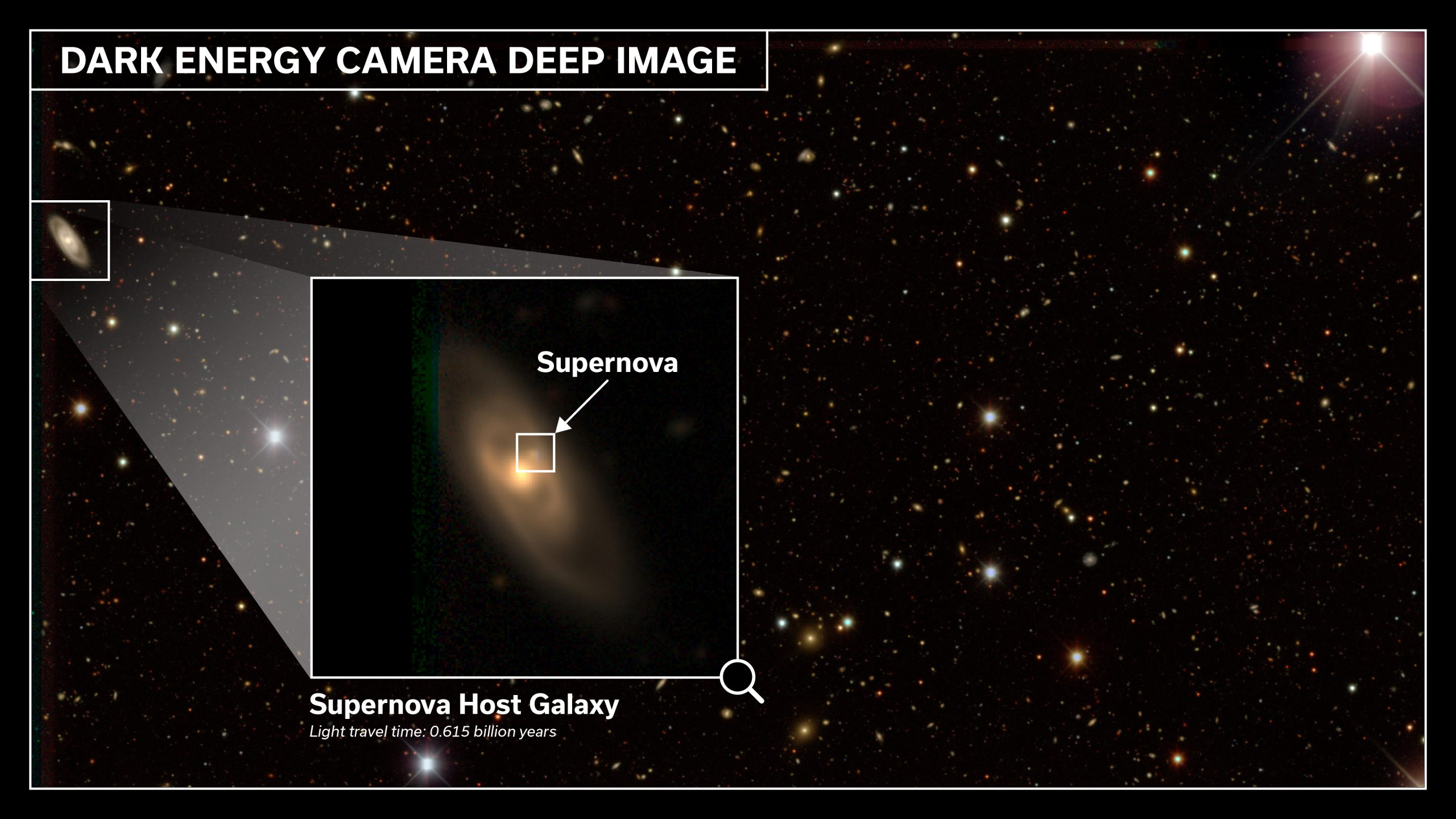Dark energy analysis is reshaping our understanding of the universe and its expansive nature. Recent investigations from the international Dark Energy Spectroscopic Instrument (DESI) collaboration highlight a potential shift in our perception of dark energy, a force believed to drive the universe’s accelerating expansion. By conducting detailed studies on Baryon Acoustic Oscillations, researchers are uncovering vital data about how dark energy has influenced cosmic evolution over the past 11 billion years. These findings carry significant cosmological implications, suggesting the need for a revised standard model of astrophysics research. As scientists engage with the intricacies of universe expansion, their work forms a cornerstone for future explorations into the fabric of the cosmos.
The exploration of dark energy often surfaces in discussions about the universe’s growth, known as cosmic expansion, and its underlying forces. As researchers delve into this phenomenon through intricate data gathered from the DESI collaboration, they are investigating the evolving characteristics of dark energy while analyzing its effects on the cosmic structure. By examining patterns of matter across vast scales, scientists can infer the dynamics of the universe’s expansion and its potential trajectories. This investigation also touches on related concepts such as baryonic matter distributions and their fluctuation over epochs, which are pivotal in comprehending the broader astrophysical landscape. Ultimately, this inquiry prompts us to reconsider fundamental theories within astrophysics, embracing the ongoing quest to decipher the universe’s enigmatic depths.
Understanding Dark Energy’s Role in Universe Expansion
Dark energy is a fundamental force that plays a critical role in the accelerating expansion of the universe. It is the elusive substance believed to constitute approximately 68% of the universe, yet its exact nature remains one of the biggest mysteries in astrophysics. The ongoing research, particularly through projects like the Dark Energy Spectroscopic Instrument (DESI), seeks to unravel these mysterious properties and measure its impact on cosmic structures over time. Current theories suggest that dark energy operates as a cosmological constant, but recent findings indicate that its influence may be changing, necessitating a reevaluation of existing models regarding universe expansion.
The implications of dark energy’s potential weakening are profound, as they suggest that the universe’s fate is still uncertain. This evolving understanding forces cosmologists to consider alternative theories and models that accommodate these new findings. With DESI’s unprecedented ability to map cosmic structures, researchers can analyze the distribution of matter across the universe in detail, providing clarity on how dark energy affects the cosmos at large. The results from this global collaboration push the frontiers of astrophysics research, prompting scientists to explore new avenues that challenge older paradigms.
Frequently Asked Questions
What is dark energy analysis and why is it important for universe expansion?
Dark energy analysis is a critical area of astrophysics research that investigates the mysterious force believed to be driving the accelerating expansion of the universe. Understanding dark energy is vital because it directly influences cosmic evolution and the future of the universe by balancing matter and energy.
How does the DESI collaboration contribute to dark energy analysis?
The Dark Energy Spectroscopic Instrument (DESI) collaboration plays a significant role in dark energy analysis by creating the largest 3D map of the universe. Through its data, DESI examines how dark energy affects the distribution of matter across cosmic time, helping researchers understand its impact over the last 11 billion years.
What are the cosmological implications of dark energy analysis?
The cosmological implications of dark energy analysis are profound, as new findings suggest that dark energy, traditionally thought to be a constant, may be weakening over time. This could challenge existing models of the universe’s expansion and lead to a revised understanding of its fate.
What role do Baryon Acoustic Oscillations play in dark energy analysis?
Baryon Acoustic Oscillations are crucial in dark energy analysis as they serve as a ‘standard ruler’ for measuring the expansion of the universe. By studying the size of these oscillations at various epochs, researchers can assess the strength of dark energy throughout cosmic history.
What can the public access from the DESI collaboration’s dark energy analysis findings?
The DESI collaboration has released its Data Release 1, which is accessible to the public. This comprehensive dataset includes detailed information on millions of celestial objects, supporting further astrophysical research and enhancing public engagement in dark energy analysis.
How does dark energy analysis impact our understanding of the universe’s future?
Dark energy analysis impacts our understanding of the universe’s future by revealing how this mysterious force influences cosmic acceleration. Insights gained from this field can potentially redefine our concepts of the universe’s ultimate fate and its expansion dynamics.
How do researchers use dark energy analysis in studying galaxy evolution?
Researchers leverage dark energy analysis to explore galaxy evolution by examining how the distribution of galaxies over time correlates with changes in dark energy. Insights from DESI’s findings contribute to a deeper understanding of how galaxies form and evolve under the influence of dark energy.
What advancements have the DESI collaboration made in dark energy analysis recently?
Recently, the DESI collaboration disclosed findings indicating that dark energy effects may be changing, based on data collected from over 14 million galaxies and quasars. This advancement offers new evidence that could reshape our understanding of cosmic expansion.
| Key Points |
|---|
| New results from the DESI collaboration indicate that dark energy might be weakening over time, prompting a potential revision of the universe’s standard model. |
| The fate of the universe hinges on the balance between matter and dark energy, influencing its accelerating expansion. |
| DESI’s large-scale 3D mapping of the universe over the past 11 billion years helps assess dark energy’s changing influence. |
| Baryon Acoustic Oscillations provide a standard ruler for measuring dark energy’s strength through cosmic history. |
| Researchers utilized data from over 14 million galaxies and quasars, strengthening evidence of dark energy’s unexpected changes. |
| The collaboration involves 900 researchers globally and is managed by the U.S. Department of Energy’s Berkeley Lab. |
| DESI’s findings are published in arXiv and presented at significant physics summits, with data available for public exploration. |
| CfA researchers also study galaxy evolution, cosmic web, and Milky Way structure as part of DESI’s objectives. |
Summary
Dark energy analysis reveals critical insights about the evolution and future of the universe. Recent findings from the DESI collaboration suggest that dark energy may be weakening, challenging existing theories about cosmic expansion. As researchers continue to explore the effects of dark energy on matter distribution across the universe, the ongoing data from this project promises to enhance our understanding of fundamental astrophysical principles. This evolving perspective will contribute significantly to how we comprehend the structure and fate of the cosmos.



